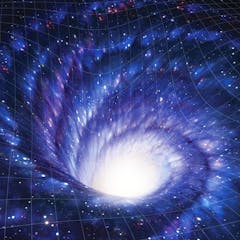
Articles on Big Bang
Displaying 1 - 20 of 68 articles

Analysis of two major cosmic blasts deepens the mystery of where the universe’s ‘heavy’ elements come from.

Now out in space for more than two years, the James Webb Space Telescope is a stunningly sophisticated instrument.

The universe is expanding faster than physicists would expect. To figure out what processes underlie this fast expansion rate, some researchers are first trying to rule out what processes can’t.

Einstein’s theory of general relativity suggests that our universe originated in a Big Bang. But black holes, and their gravitational forces, challenge the limits of Einstein’s work.

A book-length thought experiment uses math to investigate some of life’s big questions.

The universe used to be filled with a hydrogen fog, before early stars and galaxies burned through the haze. Astronomers are studying galaxies that tell them about this period in the early universe.

The way particles interacted while the universe was forming seconds after the Big Bang could explain why the universe exists the way it does – a physicist explains matter-antimatter asymmetry.

Bright, flickering galaxies called quasars were thought to pose a problem for our understanding of the cosmos – but new research shows Einstein was right yet again.

Astronomers have for the first time detected the background hum of gravitational waves likely caused by merging black holes.

Evolutionary geneticist Jenny Graves loves classical choral music, but grew tired of its biblical themes. So she set out to write an alternative based in science.

The darkness of the night sky seems so obvious as to need no explanation – yet it has intrigued and baffled scientists for centuries.

Some physicists think we live in a multiverse, surrounded by universes not quite like our own. What does that mean for life?

The discovery of massive, early galaxies could force scientists to rethink how the first galaxies formed after the Big Bang.

Astronomers have found that mysterious dark energy may originate in black holes.

It has been one year since the launch of the James Webb Space Telescope and six months since the first pictures were released. Astronomers are already learning unexpected things about the early universe.

An astrophysicist explains what wormholes are and how these theoretical space-time tunnels have popped up in the solutions to a set of decadesold equations.

James Webb has spotted extremely distant galaxies formed soon after the Big Bang, but are they old or young? Or is this the wrong question to ask?

It’s the oldest light in the universe.

The Hubble Space Telescope could gaze back 13.4 billion years, and with the JWST we expect to improve on this possibly to 13.55 billion years.

Time ends when the universe does.





